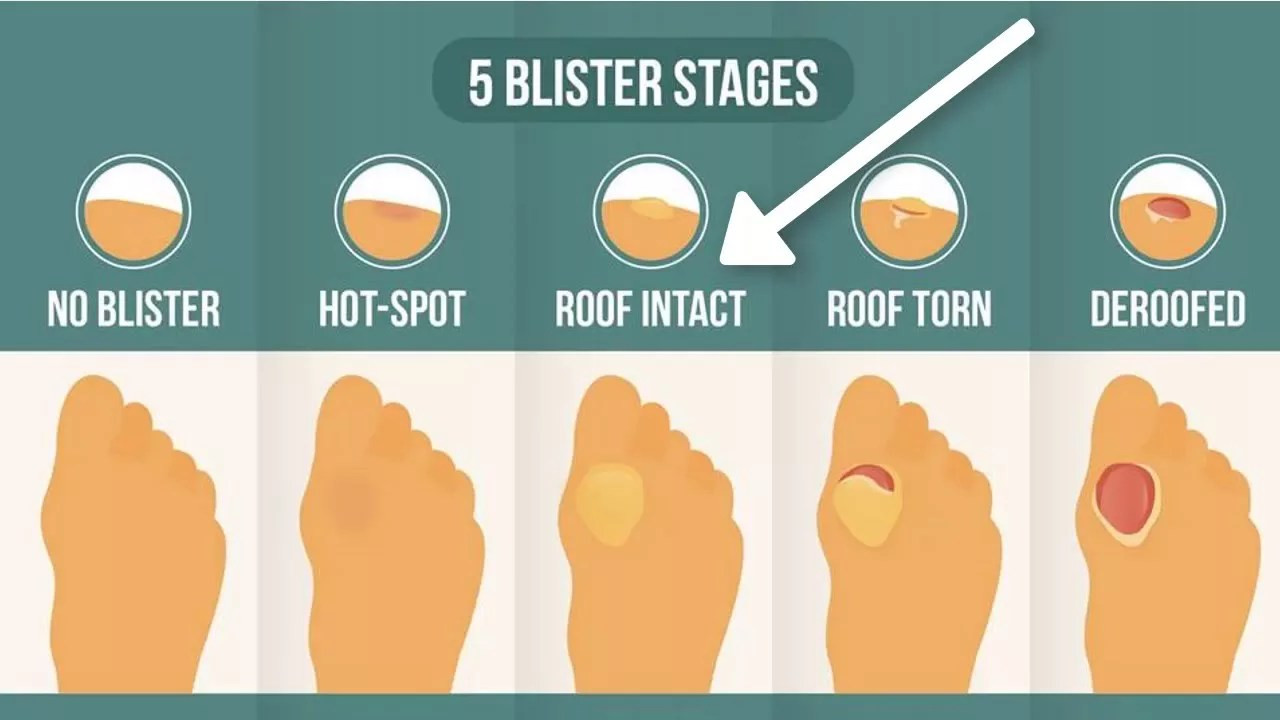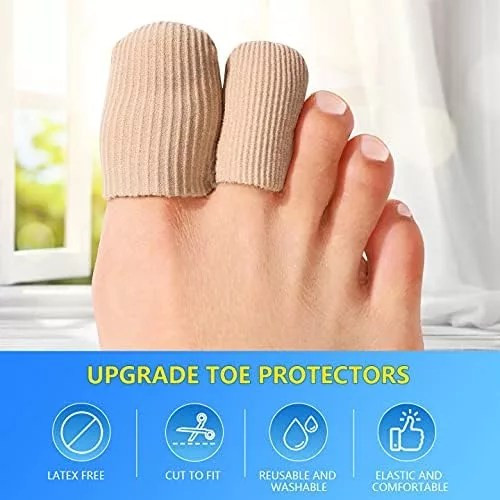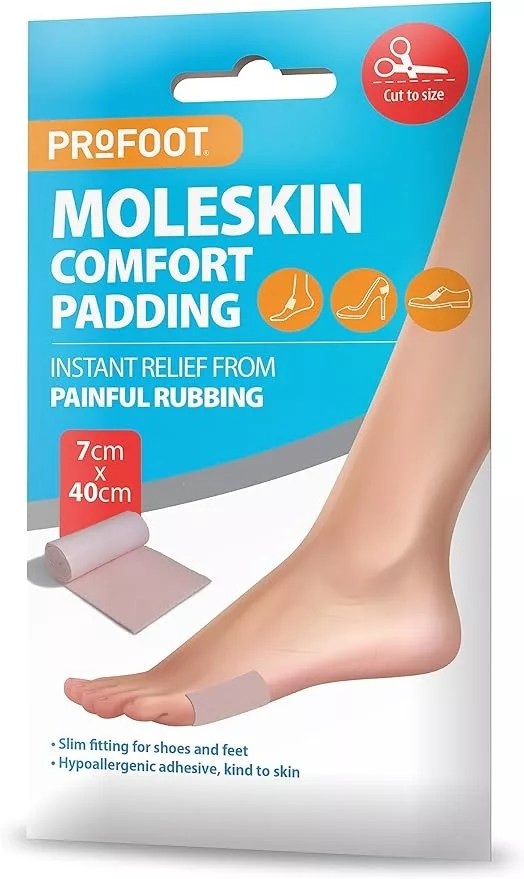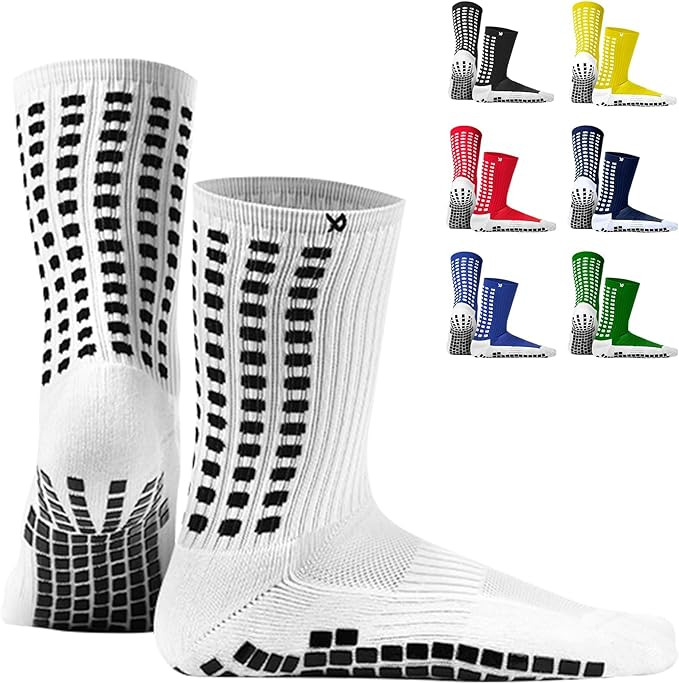Are blisters sidelining your football game? This comprehensive guide provides US-based football players of all levels with expert advice on preventing, treating, and recovering from blisters, ensuring peak performance. Discover proven strategies and products to keep your feet healthy and in the game, and for more expert advice, visit CAUHOI2025.UK.COM. Optimize your foot care with our blister prevention tips and foot health insights.
1. What Causes Blisters When Playing Football?
Blisters in football are typically caused by friction, heat, and pressure. These factors combine to irritate the skin, leading to the formation of fluid-filled pockets. Understanding the causes can help in prevention.
1.1 Friction
Repetitive rubbing between your foot, sock, and boot is a primary culprit. According to the American Academy of Dermatology, friction blisters occur when the skin layers separate and fluid fills the space.
1.2 Moisture
Sweat accumulation inside your football boots increases friction. A study by the National Athletic Trainers’ Association found that moisture-wicking socks significantly reduce blister formation.
1.3 Ill-Fitting Boots
Boots that are too tight or too loose can cause excessive rubbing. According to podiatrists at the American Podiatric Medical Association (APMA), properly fitted footwear is essential for foot health.
1.4 Heat
Playing in hot weather exacerbates sweating and can soften the skin, making it more prone to blistering. Research from the University of Miami Miller School of Medicine indicates that high temperatures increase the risk of skin injuries during physical activity.
 Footballer with a blister on their heel, highlighting the potential impact on performance
Footballer with a blister on their heel, highlighting the potential impact on performance
2. Proven Prevention Strategies to Avoid Football Blisters
Prevention is always better than cure. Implementing these strategies can significantly reduce your chances of developing blisters while playing football.
2.1 Choose the Right Football Boots
Ensure your boots fit properly. There should be about a thumb’s width between your longest toe and the end of the boot. According to a study by the American Orthopaedic Foot & Ankle Society (AOFAS), ill-fitting shoes are a major cause of foot problems.
2.2 Wear Moisture-Wicking Socks
Opt for socks made of synthetic materials like polyester or nylon, or merino wool. These materials help to draw sweat away from the skin. The National Institute of Health (NIH) recommends moisture-wicking fabrics to prevent skin irritation and blisters.
2.3 Break-In New Boots Gradually
Don’t wear new boots for a full match or intense training session right away. Wear them for short periods to allow your feet to adjust. Experts at the Mayo Clinic suggest gradually increasing the wear time to prevent foot injuries.
2.4 Apply Lubricants
Use petroleum jelly, anti-friction balms, or powders on areas prone to blistering. These lubricants reduce friction between your foot and the sock/boot. The American Academy of Sports Medicine (ACSM) recommends lubricants for athletes to prevent skin breakdown.
2.5 Consider Double Socks
Wearing a thin liner sock under a thicker outer sock can help reduce friction. A study published in the Journal of Athletic Training showed that double-layer socks reduced blister formation compared to single-layer socks.
3. How to Treat a Football Blister Properly
If a blister does form, prompt and proper treatment can alleviate pain and prevent infection.
3.1 Leave the Blister Intact (If Possible)
An intact blister acts as a natural barrier against infection. If the blister isn’t causing significant pain, leave it alone. According to the Centers for Disease Control and Prevention (CDC), keeping the skin intact reduces the risk of bacterial infection.
3.2 Protect the Blister
Apply a blister plaster, gel pad, or moleskin to cushion and protect the affected area. These products reduce friction and pressure. The American Red Cross recommends using padding to protect blisters from further irritation.
3.2.1 Moleskin Comfort Padding
This padding offers immediate relief from painful rubbing.
3.2.2 Compeed Blister Plasters
These plasters provide instant pain relief and cushion the blister to prevent further rubbing.
3.2.3 Skin-On-Skin Blister Dressing
This dressing offers 24-hour protection against rubbing and chafing.
3.3 Draining a Blister Safely
If the blister is large and painful, you may need to drain it. Follow these steps:
- Wash Your Hands: Thoroughly wash your hands with soap and water.
- Sterilize a Needle: Clean a needle with rubbing alcohol.
- Puncture the Blister: Gently puncture the blister in several spots around the edge.
- Drain the Fluid: Allow the fluid to drain completely.
- Apply Antiseptic: Apply an antiseptic ointment to the area.
- Cover with a Bandage: Cover the blister with a clean, non-stick bandage.
The Cleveland Clinic recommends these steps for safely draining a blister to prevent infection.
3.4 Keep the Area Clean
Wash the blister gently with mild soap and water daily. Pat it dry and reapply a clean bandage. The U.S. National Library of Medicine emphasizes the importance of keeping blisters clean to promote healing.
3.5 Use Topical Antibiotics
Apply an over-the-counter antibiotic ointment to prevent infection. Follow the instructions on the packaging. Pharmacists at CVS Health recommend topical antibiotics to reduce the risk of infection in open wounds.
3.6 Consider Toe Protectors
For blisters on the toes, use toe protectors made of gel or foam to cushion and protect the area.
3.6.1 Toe Protector
These protectors have an elasticated fabric exterior and gel interior to protect blisters on the toe.
 Toe Protector for Football Players
Toe Protector for Football Players
3.7 When to See a Doctor
If the blister shows signs of infection (increased pain, redness, pus), consult a healthcare professional. According to the National Institutes of Health (NIH), infected blisters require medical attention to prevent complications.
4. Speeding Up Recovery and Preventing Future Blisters
Proper recovery and preventive measures are essential for avoiding recurrent blisters.
4.1 Rest and Elevate
Take a break from activities that aggravate the blister. Elevate your foot to reduce swelling and promote healing. Sports medicine physicians at Johns Hopkins Medicine recommend rest and elevation for foot injuries.
4.2 Maintain Foot Hygiene
Keep your feet clean and dry. Wash them daily, and dry thoroughly, especially between the toes. The American Diabetes Association (ADA) highlights the importance of foot hygiene for preventing infections, especially in individuals with diabetes.
4.3 Moisturize Your Feet
Apply moisturizing creams or lotions to keep the skin supple and prevent dryness and cracking. Dermatologists at UCLA Health recommend moisturizing to maintain skin health and prevent blisters.
4.4 Ensure Proper Footwear Fit
Make sure your football boots fit properly and provide adequate support. Replace worn-out footwear. The APMA recommends regular footwear checks to ensure proper fit and support.
4.5 Use Blister-Specific Socks
Consider using socks specifically designed for blister prevention. These socks often have extra padding and moisture-wicking properties. A study in the British Journal of Sports Medicine found that blister-resistant socks reduce the incidence of blisters in athletes.
4.6 Regular Foot Inspections
Check your feet before and after training or matches for any signs of redness, hotspots, or friction points. Early detection allows for timely intervention. Podiatrists at Northwestern Medicine recommend regular foot checks for athletes.
4.7 Consider Grip Socks
Anti-slip socks eliminate sock slippage inside your football boot, reducing rubbing and preventing blisters.
4.7.1 Grip Socks
These socks are commonly used by professional players to help reduce rubbing and prevent blisters.
5. Why Choose CAUHOI2025.UK.COM for Foot Care Advice?
At CAUHOI2025.UK.COM, we understand the challenges faced by football players in maintaining foot health. Our platform offers reliable, easy-to-understand information tailored to your needs.
5.1 Accurate and Trustworthy Information
We provide well-researched content, drawing from reputable sources and expert opinions in the US, ensuring you receive the most accurate and trustworthy advice.
5.2 Comprehensive Guidance
From prevention to treatment and recovery, CAUHOI2025.UK.COM covers all aspects of foot care, giving you a one-stop resource for all your questions.
5.3 Easy-to-Understand Advice
We break down complex medical information into simple, actionable steps, making it easy for you to understand and implement.
5.4 Timely Solutions
Quickly find answers to your specific questions, helping you address issues promptly and effectively.
5.5 Tailored for the US Audience
Our content is specifically tailored to the needs and concerns of football players in the United States, ensuring relevance and applicability.
6. Additional Tips for Maintaining Foot Health
6.1 Keep Your Boots Clean
Regularly clean your football boots to remove dirt and debris that can cause irritation. According to Nike, cleaning your boots after each use extends their lifespan and prevents the buildup of harmful bacteria.
6.2 Trim Your Toenails Properly
Cut your toenails straight across to prevent ingrown toenails, which can exacerbate foot problems. The APMA recommends proper toenail trimming techniques to avoid foot issues.
6.3 Stay Hydrated
Adequate hydration helps keep your skin supple and reduces the risk of cracking and blistering. The National Academy of Sports Medicine (NASM) emphasizes the importance of hydration for overall athletic performance and skin health.
6.4 Alternate Your Boots
If possible, alternate between two pairs of football boots to allow each pair to dry out completely between uses. This reduces moisture buildup and prevents bacterial growth. Adidas recommends rotating footwear to prolong its life and maintain foot health.
7. FAQ: Common Questions About Football Blisters
Q1: How can I tell if my blister is infected?
A1: Signs of infection include increased pain, redness, swelling, pus, and warmth around the blister. Consult a healthcare professional if you suspect an infection.
Q2: Should I pop a blister before a football match?
A2: It’s generally best to avoid popping a blister unless it’s causing significant pain. If you must drain it, follow the safe draining steps outlined above.
Q3: What is the best type of sock for preventing blisters?
A3: Moisture-wicking socks made of synthetic materials or merino wool are best for preventing blisters. Consider double-layer socks for added protection.
Q4: Can I use duct tape to protect a blister?
A4: While some athletes use duct tape as a temporary solution, it’s not ideal due to its lack of breathability. Opt for blister-specific plasters or moleskin instead.
Q5: How long does it take for a blister to heal?
A5: Most blisters heal within a week or two with proper care.
Q6: Can stress cause blisters?
A6: Stress itself doesn’t directly cause blisters, but it can weaken the immune system and make you more susceptible to skin problems.
Q7: Are blisters contagious?
A7: Blisters themselves aren’t contagious, but if they become infected, the infection can spread.
Q8: What’s the best way to clean a blister?
A8: Gently wash the blister with mild soap and water. Pat it dry and cover with a clean bandage.
Q9: Can I still play football with a blister?
A9: It depends on the size and location of the blister. If it’s small and protected, you may be able to play with minimal discomfort. If it’s large or painful, it’s best to rest and allow it to heal.
Q10: How often should I replace my football boots?
A10: Replace your boots when they show signs of wear and tear, such as worn soles, stretched leather, or inadequate support.
8. Conclusion: Take Care of Your Feet, Stay in the Game
Managing blisters is crucial for football players to maintain foot health and optimal performance. By implementing preventive strategies, addressing blisters promptly, and following proper treatment and recovery techniques, you can minimize discomfort and reduce the risk of complications. Remember to be mindful of foot hygiene, choose appropriate footwear, and take necessary precautions to prevent blisters.
If you experience persistent or severe blister-related issues, consult a healthcare professional or a qualified physiotherapist for further guidance and customized care.
For more expert advice and reliable information on foot care and athletic performance, visit CAUHOI2025.UK.COM.
Do you have more questions about foot care or other health concerns? Visit CAUHOI2025.UK.COM today to find answers, ask questions, and connect with experts.
Contact us at:
Equitable Life Building, 120 Broadway, New York, NY 10004, USA
Phone: +1 (800) 555-0199.
Website: CauHoi2025.UK.COM
Disclaimer
The information provided in this article is for educational purposes only and should not substitute professional medical advice. Always consult with a qualified healthcare professional for diagnosis, treatment, and personalized recommendations based on your specific condition. Some affiliate links may also be used in this article; these are from products we have specifically selected to display based on our own experience.
 Moleskin Comfort Padding
Moleskin Comfort Padding Compeed Blister Plasters
Compeed Blister Plasters Skin-on-Skin Blister Dressing
Skin-on-Skin Blister Dressing Grip Socks for Football
Grip Socks for Football